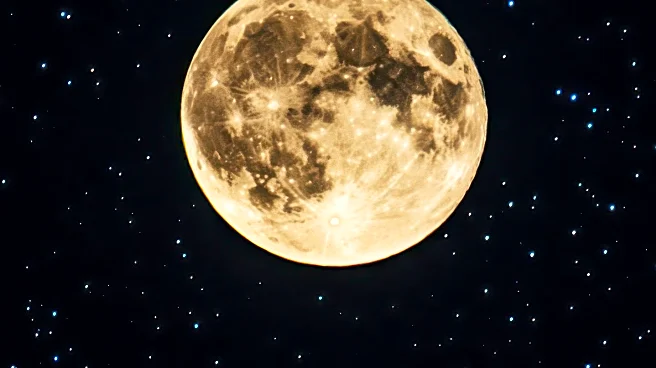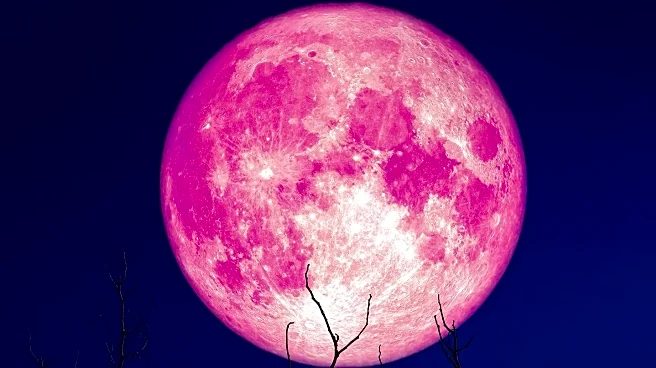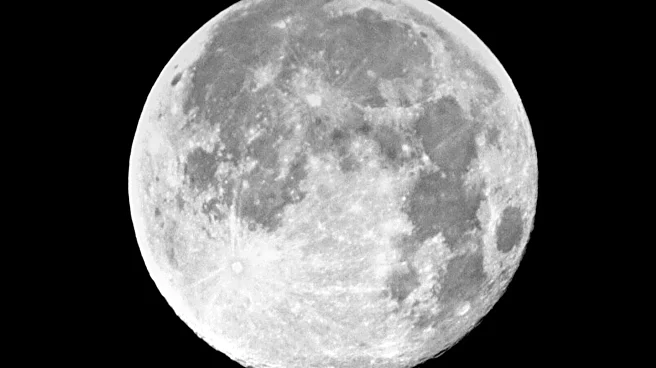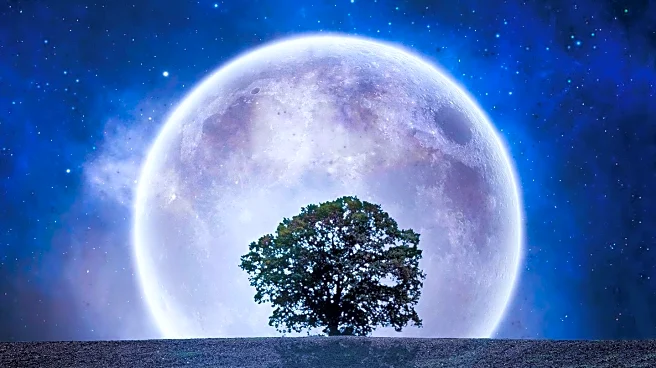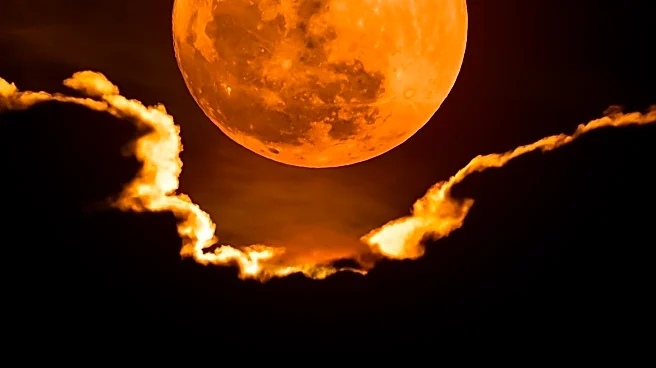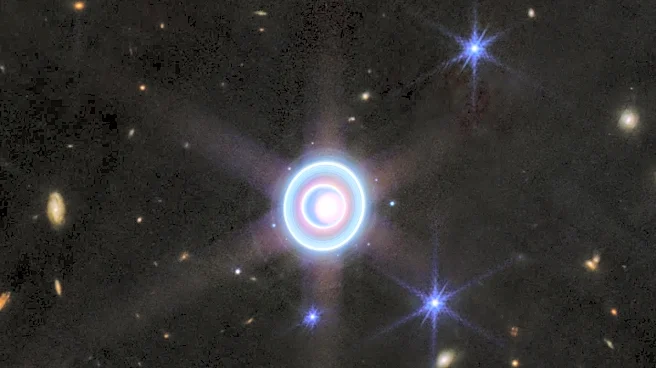What's Happening?
The first supermoon of 2025, known as the Harvest Moon, will peak on October 6 at 11:48 p.m. EDT. This full moon is significant as it is the closest to the autumnal equinox, providing extended evening illumination. The supermoon occurs when the moon is at its closest point to Earth, known as perigee, making it appear larger and brighter than usual. This event is traditionally called the Harvest Moon because it historically provided farmers with extra light to complete their harvests before the onset of fall frosts.
Why It's Important?
The Harvest Moon's significance lies in its historical role in agriculture, offering farmers additional light to extend their working hours during the harvest season. The supermoon aspect adds a modern dimension, attracting interest from astronomers and the general public. This event highlights the enduring connection between celestial phenomena and human activities, showcasing how natural events have historically influenced agricultural practices. The occurrence of the Harvest Moon as a supermoon also emphasizes the ongoing fascination with astronomical events and their cultural impact.
What's Next?
Following the Harvest Moon, skywatchers can anticipate additional supermoons and meteor showers throughout the year. The next full moon, known as the Beaver Moon, will occur on November 5 and is expected to be the year's most impressive supermoon. This sequence of celestial events provides ongoing opportunities for public engagement with astronomy and encourages interest in observing the night sky.

